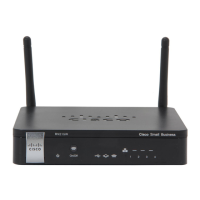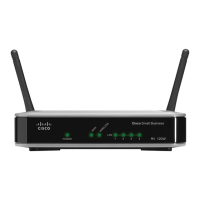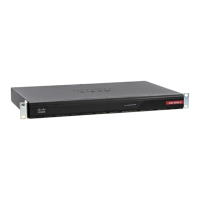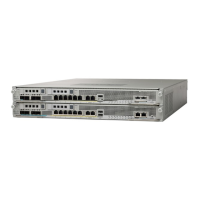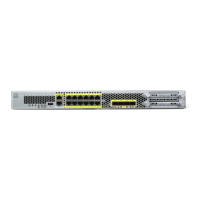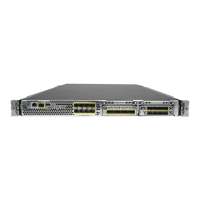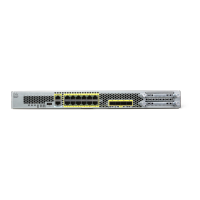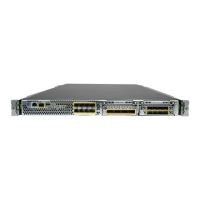Configuring Virtual Private Networks (VPNs) and Security
Basic VPN Setup
Cisco RV220W Administration Guide 110
6
STEP 1 Choose the type of peer that the VPN tunnel will connect:
• Gateway—Connects the Cisco RV220W to a gateway, such as another
Cisco RV220W at another site.
• VPN Client—Connects the Cisco RV220W to remote clients. The remote
clients must run VPN client software.
STEP 2 In the Connection Name and Remote IP Type section, enter the following
information:
• New Connection Name—Enter a name to identify this connection. The
connection name is used for management.
• Pre-Shared Key—Enter an alpha-numeric key to be used when setting up a
connection. Include 8 to 49 characters. The double-quote character is not
allowed. Ensure that the VPN client or remote gateway is configured with this
key.
STEP 3 In the Endpoint Information section, enter the following information:
• Remote Gateway Type—If the peer is a gateway, choose a method for
identifying the remote router. You can use either an IP address or a Fully-
Qualified Domain Name. You must configure the same type for the remote
gateway and the local gateway.
• Remote WANs IP Address / FQDN—Enter one of the following options:
- For a gateway-to-gateway connection: If known, enter the remote
router’s IP address or its domain name (for example,
MyServer.MyDomain.com). If you do not have that information, keep the
default setting, remote.com.
- For a client-to-gateway connection: Keep the default setting,
remote.com, specify a client WAN IP address/FQDN if you want to
restrict access only to clients from that site.
• Local Gateway Type—Choose a method for identifying this router. You can
use either an IP address or a Fully-Qualified Domain Name. If the peer is a
gateway, choose the same type that you chose for the Remote Gateway
Type above.
• Local WANs IP Address / FQDN—Based on the above selection, enter
either this router’s IP address or its domain name (for example,
MyServer.MyDomain.com). This field can be left blank if you want to use the
same FQDN or IP address that is specified in the WAN configuration. If you
do not know the address, keep the default setting, local.com.
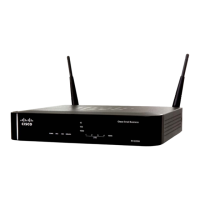
